In an archaeology lab at Historic Sandusky, Eric Taylor ’19 sifts through a brown paper bag filled with relics from the past. He brushes them gently with a toothbrush to remove the caked dirt and reveal the artifact under the grime.
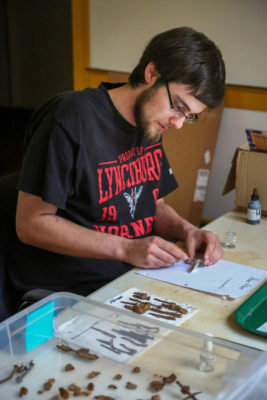 “My favorite thing to do is wash the artifacts so they become recognizable,” he said. “Although it’s tedious, I enjoy the work. Especially, if some items all fit together to form a bigger artifact or make a beautiful design.”
“My favorite thing to do is wash the artifacts so they become recognizable,” he said. “Although it’s tedious, I enjoy the work. Especially, if some items all fit together to form a bigger artifact or make a beautiful design.”
Not all artifacts are the same, either. Depending on the material, Taylor must take care of each artifact in a specific way. Ceramics and glass are washed under water, while metal and delicate artifacts are just brushed off to prevent damage.
This is just the beginning of preserving artifacts. Once all the dirt is cleaned off, Taylor works to piece the artifacts together like a puzzle. “By piecing the artifacts together, I can better understand how they were originally made and date them more accurately, increasing my historical knowledge,” he said.
After cleaning the artifacts, they are put out to dry and labeled with a number that indicates in which order they were found. The artifacts that are brought into the lab come from the land on Historic Sandusky as well construction sites where Hurt and Proffitt, an engineering firm that collaborates with the University and Historic Sandusky, conducts pre-construction archeological surveys.
Finally, the items are put into the database and stored properly. Taylor groups ceramic fragments, glass, metal, and coal that he has identified and cleaned and puts them together based on likeness. “The purpose of bagging artifacts is to sort the small artifacts found at Historic Sandusky that were all found in the same layer in the ground and are alike in structure and material,” he said.
Over the past couple of months, he has made almost 500 entries into Sandusky’s artifacts database. Each entry requires recording the material, weight, and colors.
Artifacts that come through the lab vary every week, so there are always new things to see and curate.
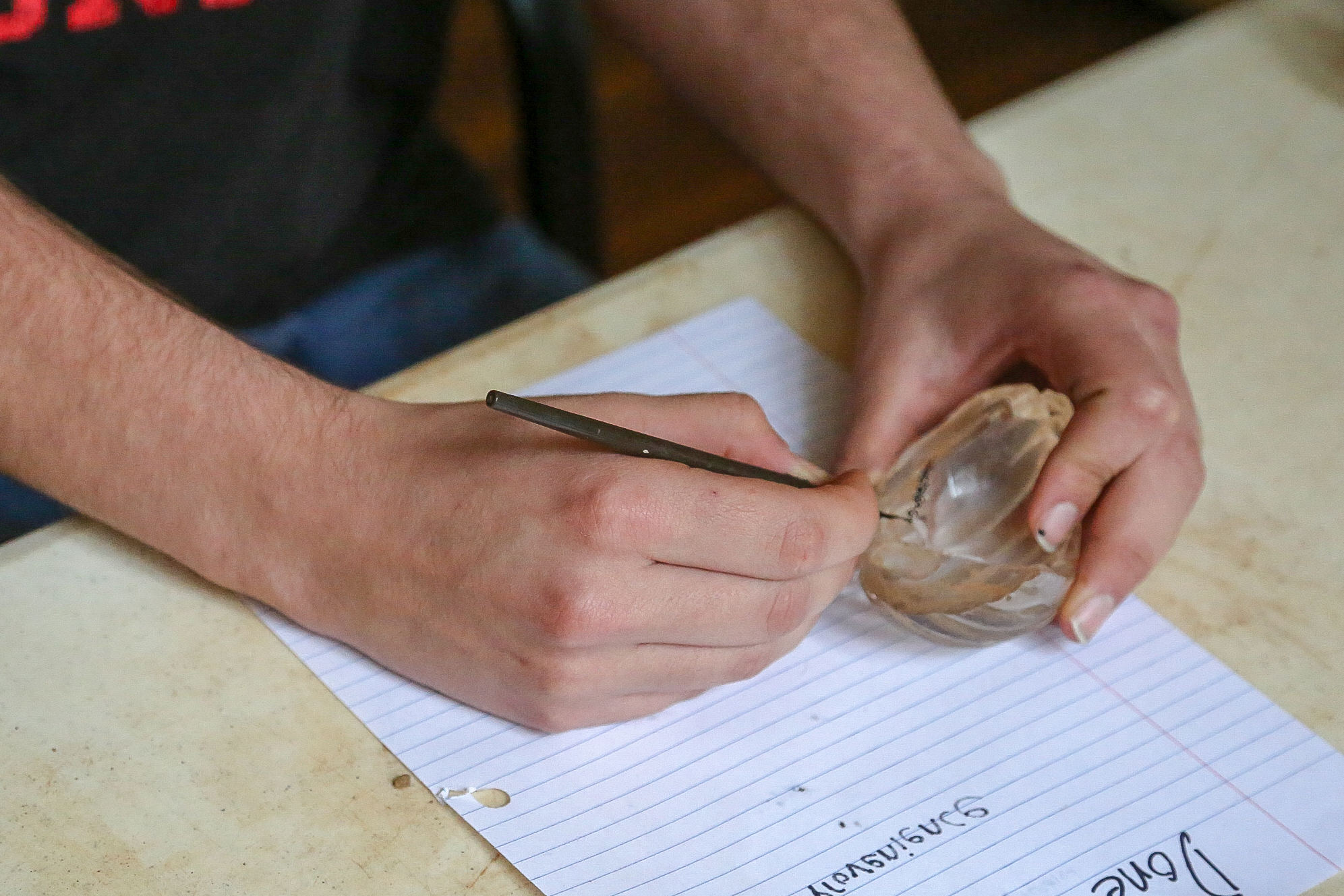
Greg Starbuck, director of Historic Sandusky, hired Taylor because he thought it would be a good fit. “Historic Sandusky holds thousands of artifacts, many of which have not been processed,” Starbuck said. “Lately, Eric has been learning how to do conservation work on iron artifacts, which is done through a variety of means including electrolysis and mechanical cleaning.”
From spending time in the archaeology lab, Taylor has learned an immense amount of information that pertains to archaeology and the history of it, which has helped advance him in his environmental science major and biology and environmental studies minors.
Taylor is increasing his skills in ceramic identification and his understanding of applied chemistry and historical researching. All of this will be useful after graduation.
“Historic Sandusky is meant to provide hands-on experiential learning for students in a variety of fields,” Starbuck said. “The goal is to provide students with opportunities to extend their knowledge and experience outside of the classroom to better prepare them for entering the workforce after graduation.”
“Because of Eric’s work, we are getting many of Sandusky’s artifacts, which are owned by the University, researched, catalogued, and curated,” Starbuck said. “In the future, when we want to create an archaeology display or exhibit, whether it’s temporary or permanent, the artifacts are identified and ready for contextualization.”
Class of 2019 Commencement Spotlights
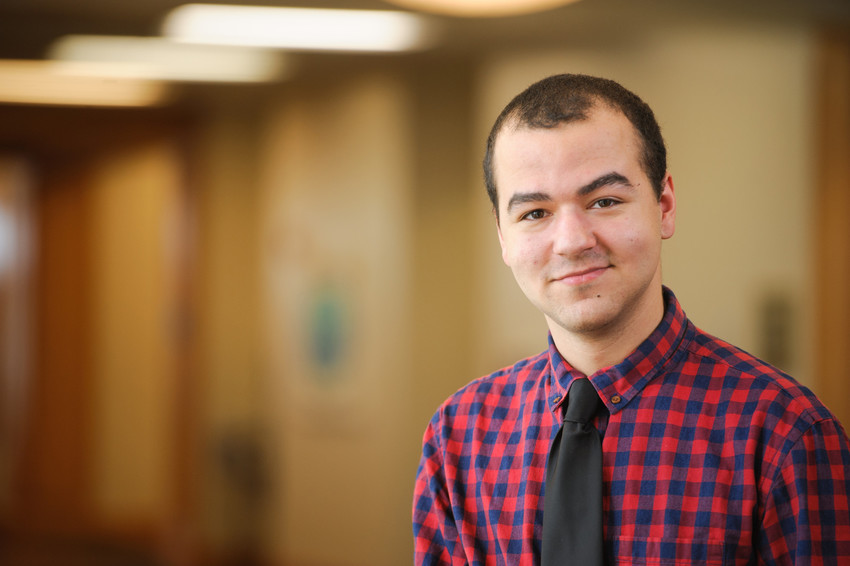
‘Solution-oriented, people-driven’ senior hopes to build bridges for inclusion
Marc Propst ’19 wishes that he, as a freshman, could have seen the person he’s become today. Propst said he’s more mature, less stubborn, and better at building bridges than […]
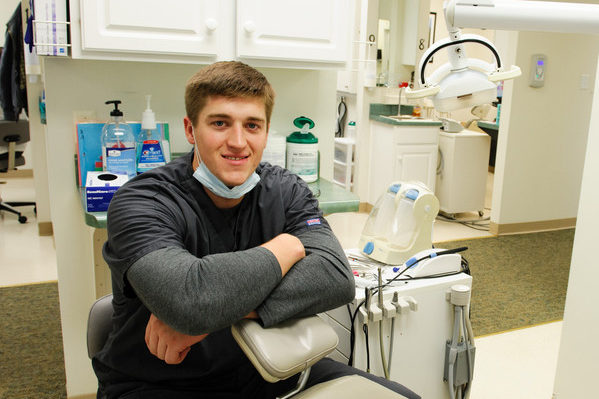
After internship with alumni, senior plans on dental school
Chris Blake ’19 cut his teeth on dental work with the help of two alumni during his senior year. The baseball player and biomedical science from Hartfield, Virginia, interned at […]
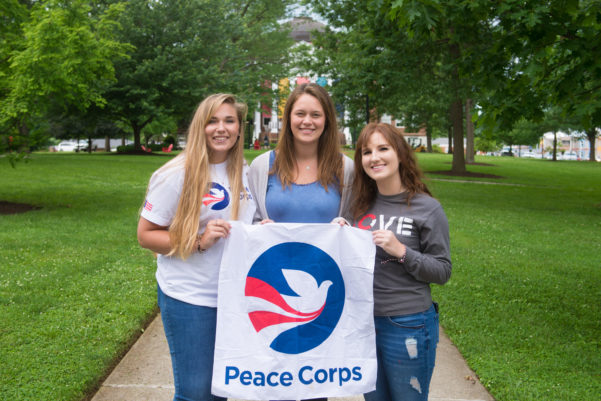
Peace Corps next adventure for three 2019 grads
Each year, the Peace Corps receives 18,000 applications and accepts only 4,000 people for service positions abroad. This year, three of the 4,000 volunteers fulfilling their passions for humanitarian work are soon-to-be University of Lynchburg alumni.
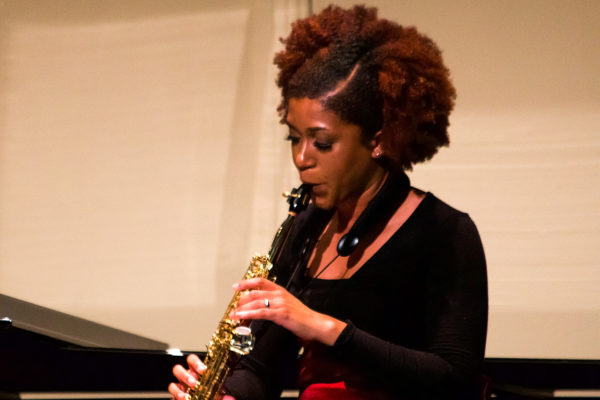
Oorah! Graduates headed to U.S. Marine Corps
Shortly after graduating from the University of Lynchburg this Saturday, Renee Banks and Endasia Mitchell will head off for careers in the U.S. Marine Corps.
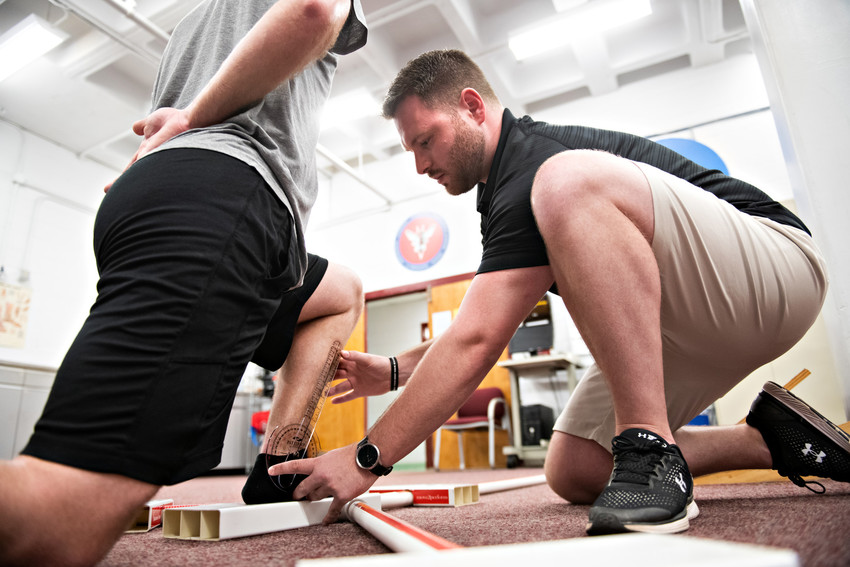
MSAT student in line for a national research award
On Friday, C.J. Rosenborough will graduate with his Master of Science in Athletic Training. Eight weeks later, he’ll be in Washington, D.C., presenting research for a national conference of strength […]
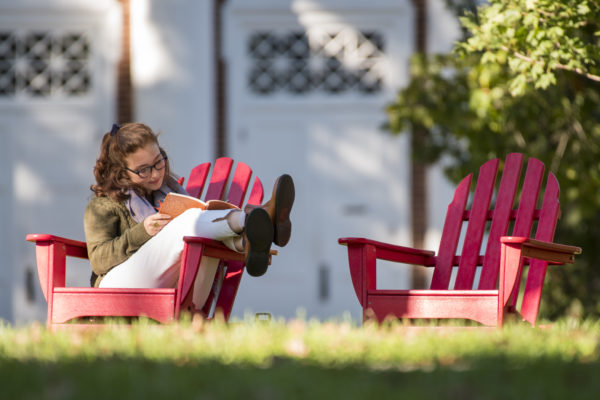
Hill Award winner ‘in a state of absolute gratefulness’
When Samah Rash ’19 received the email that she had won the 2019 Robert L. Hill Distinguished Senior Award she ran down the halls of Hobbs-Sigler looking for someone to share the news with.
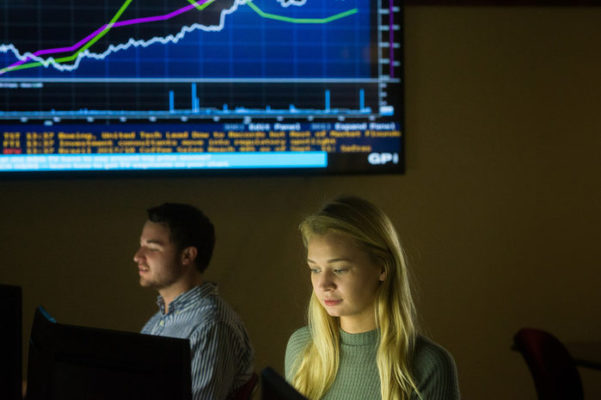
Job offer in hand, financial economics major ready for career and lifelong learning
Rebecca Taylor called her professors “super gifted” and said they “go above and beyond to help students.” As she graduates, she said she will miss the routine of having class every day and the opportunity to take random classes to explore new ideas, but she looks forward to cultivating the interests shes developed at Lynchburg.
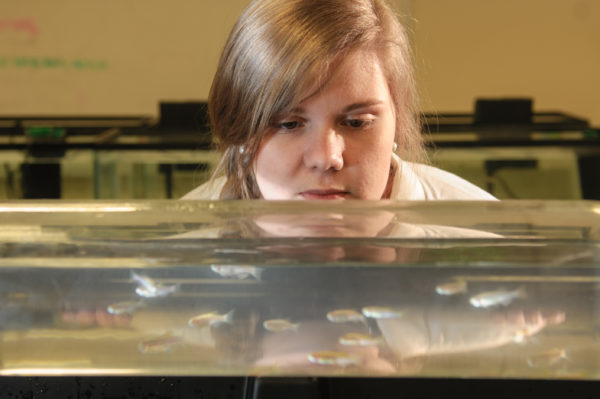
Next stop, Hawaii: Psychology major heading to first-choice PhD program
After she graduates from the University of Lynchburg this month with a bachelor’s degree in psychology, Katie Roderick ’19 is headed to the University of Hawaii to pursue a PhD in behavioral neuroscience.
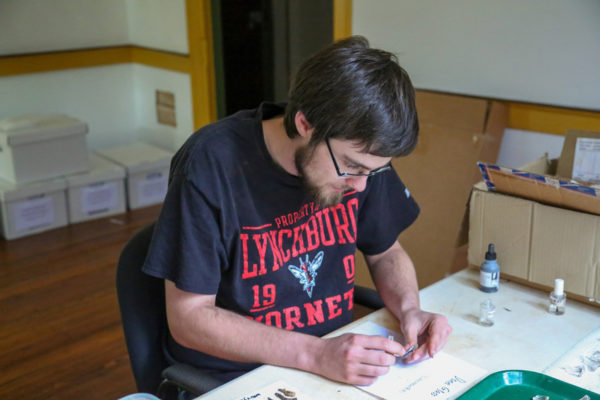
Lynchburg senior works with hundreds of artifacts in Historic Sandusky lab
In an archaeology lab at Historic Sandusky, Eric Taylor ’19 sifts through a brown paper bag filled with relics from the past. He brushes them gently with a toothbrush to […]

